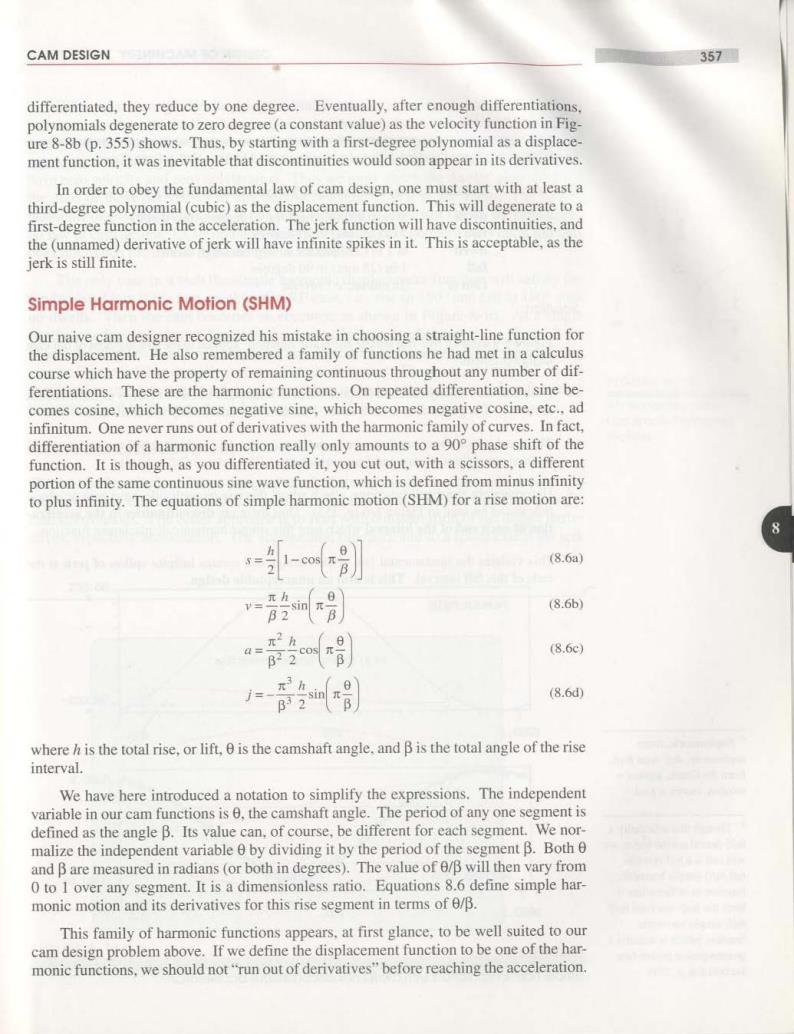正在加载图片...

CAM DESIGN 357 differentiated,they reduce by one degree.Eventually,after enough differentiations. polynomials degenerate to zero degree(a constant value)as the velocity function in Fig- ure 8-8b(p.355)shows.Thus,by starting with a first-degree polynomial as a displace- ment function,it was inevitable that discontinuities would soon appear in its derivatives. In order to obey the fundamental law of cam design,one must start with at least a third-degree polynomial(cubic)as the displacement function.This will degenerate to a first-degree function in the acceleration.The jerk function will have discontinuities,and the (unnamed)derivative of jerk will have infinite spikes in it.This is acceptable,as the jerk is still finite. Simple Harmonic Motion (SHM) Our naive cam designer recognized his mistake in choosing a straight-line function for the displacement.He also remembered a family of functions he had met in a calculus course which have the property of remaining continuous throughout any number of dif- ferentiations.These are the harmonic functions.On repeated differentiation,sine be- comes cosine,which becomes negative sine,which becomes negative cosine,etc..ad infinitum.One never runs out of derivatives with the harmonic family of curves.In fact, differentiation of a harmonic function really only amounts to a 90 phase shift of the function.It is though,as you differentiated it,you cut out,with a scissors,a different portion of the same continuous sine wave function,which is defined from minus infinity to plus infinity.The equations of simple harmonic motion(SHM)for a rise motion are: 8 (8.6a) (8.6b) π2h8 a= (8.6c) 3h。 (8.6d) where h is the total rise,or lift,0 is the camshaft angle,and B is the total angle of the rise interval. We have here introduced a notation to simplify the expressions.The independent variable in our cam functions is 0,the camshaft angle.The period of any one segment is defined as the angle B.Its value can,of course,be different for each segment.We nor- malize the independent variable 0 by dividing it by the period of the segment B.Both 0 and B are measured in radians (or both in degrees).The value of 0/B will then vary from 0 to I over any segment.It is a dimensionless ratio.Equations 8.6 define simple har- monic motion and its derivatives for this rise segment in terms of 0/B. This family of harmonic functions appears.at first glance,to be well suited to our cam design problem above.If we define the displacement function to be one of the har- monic functions.we should not"run out of derivatives"before reaching the acceleration